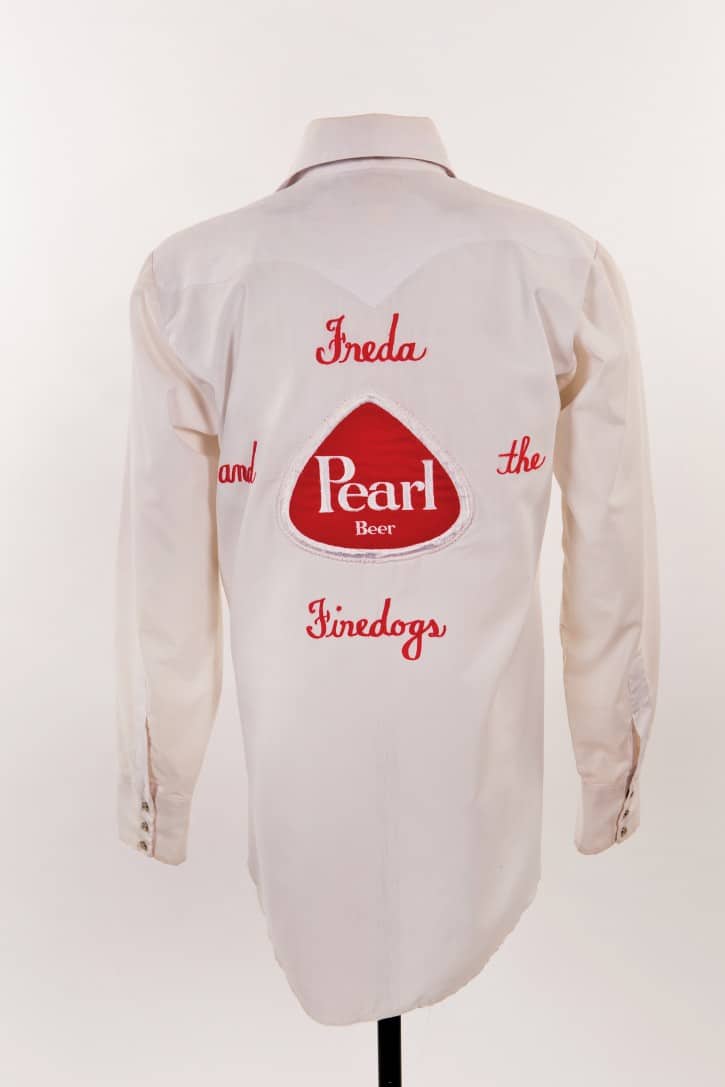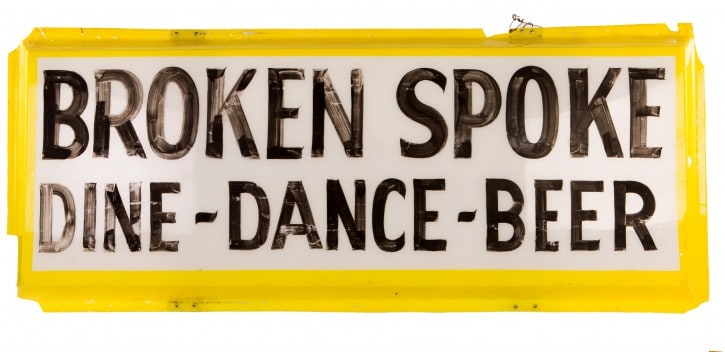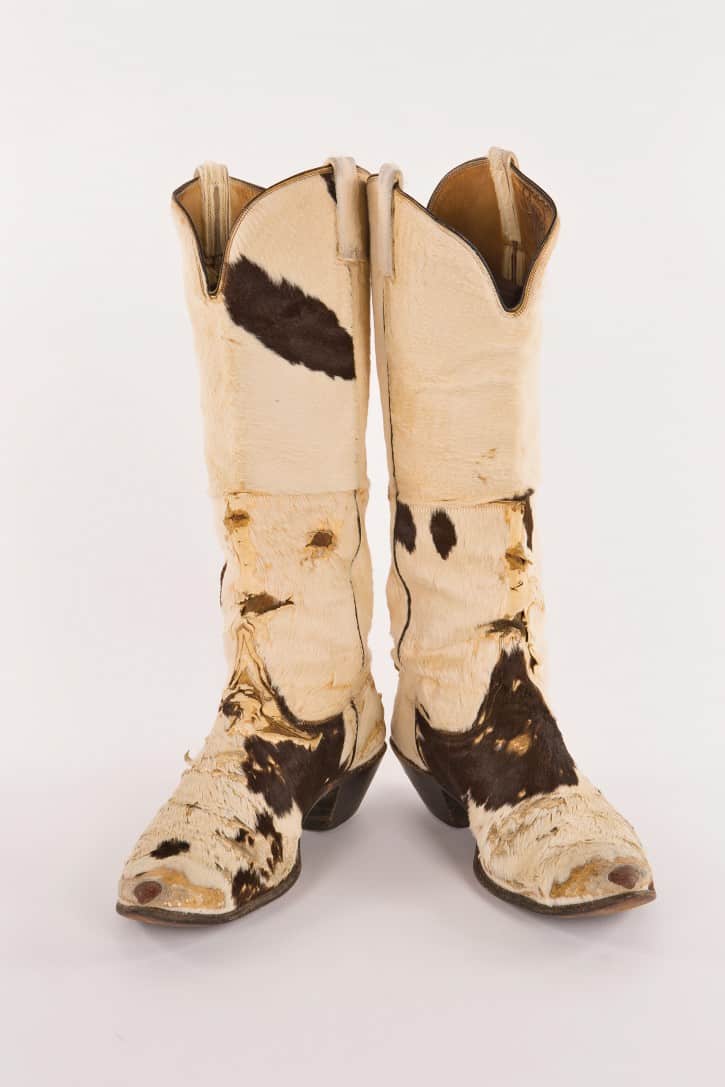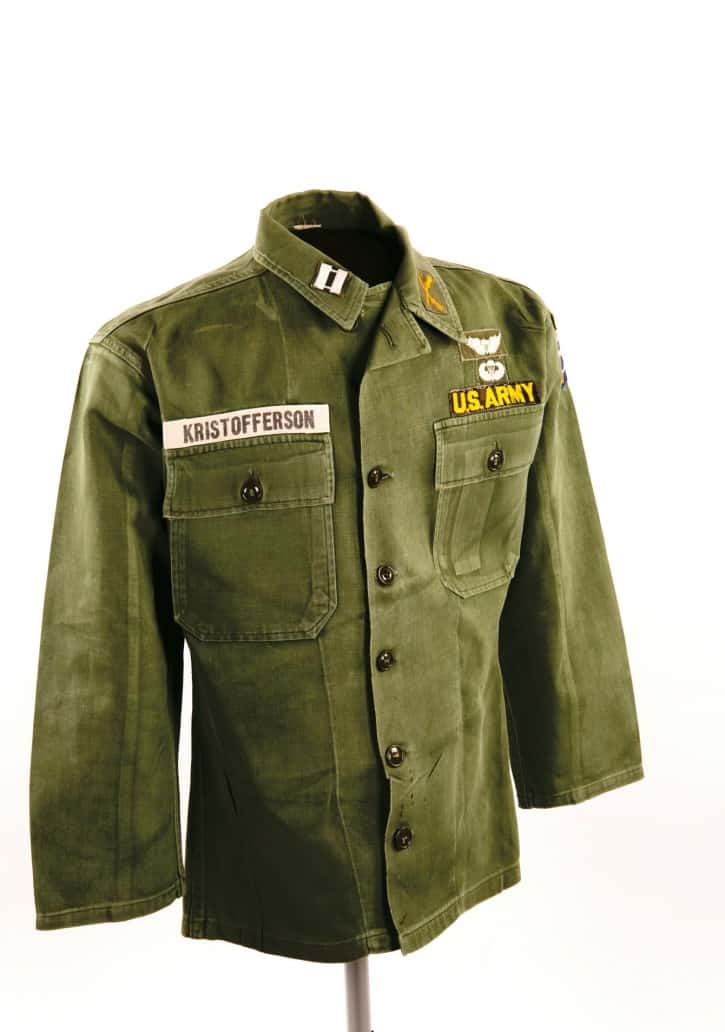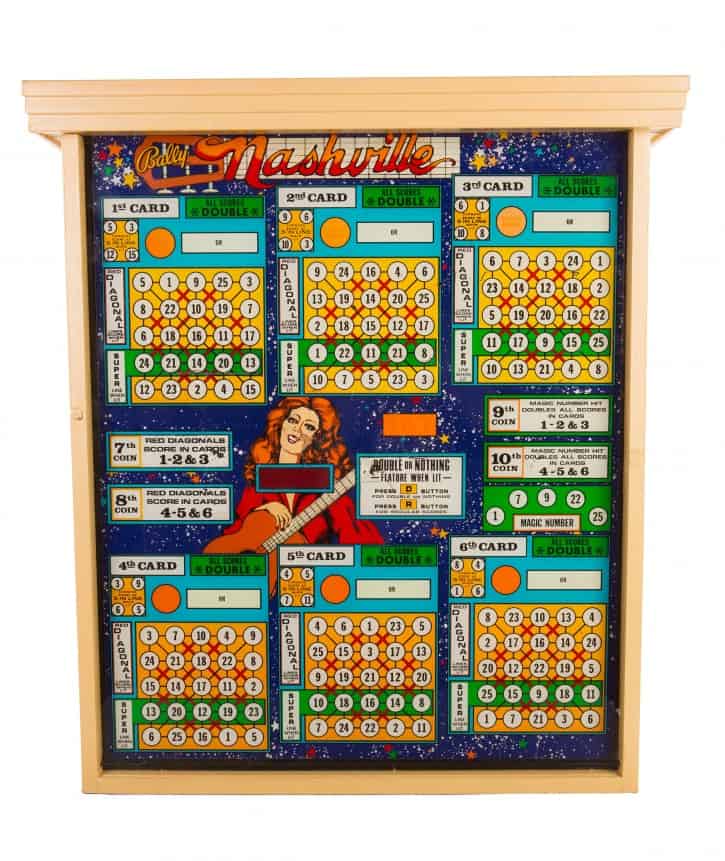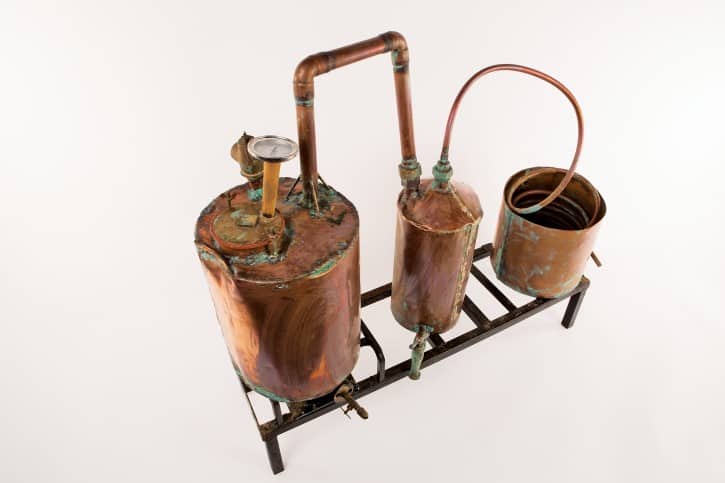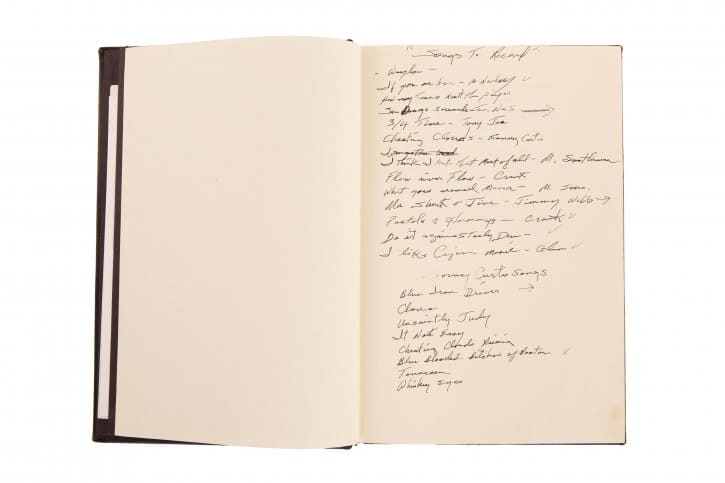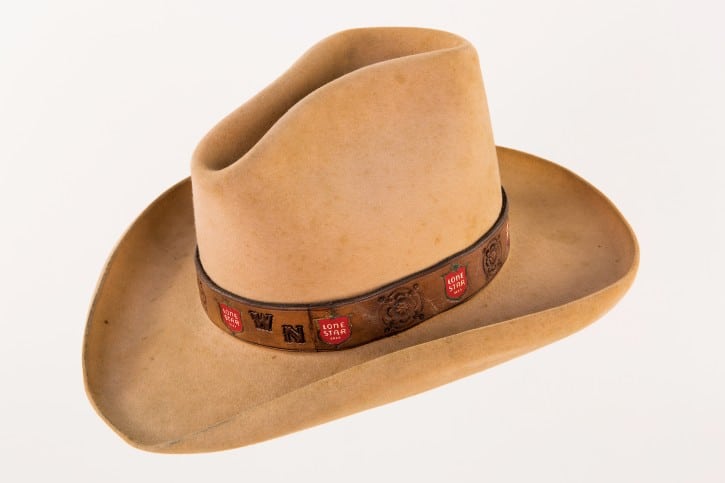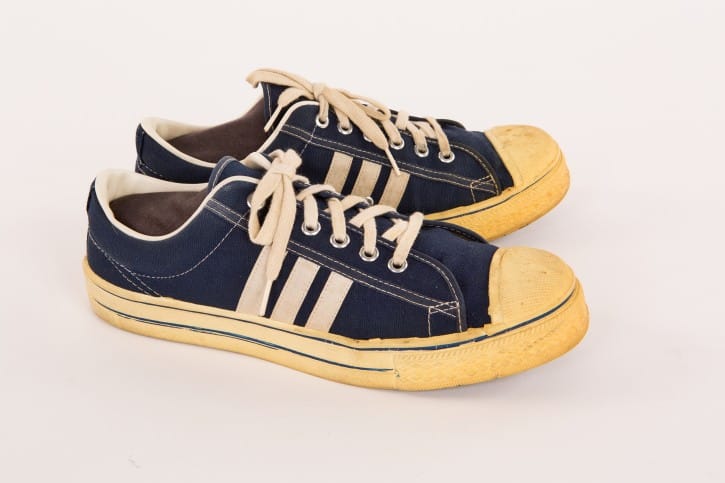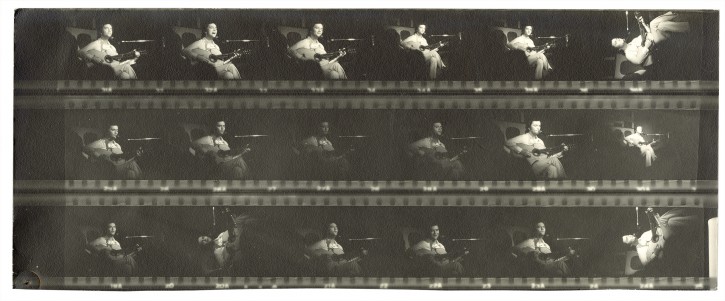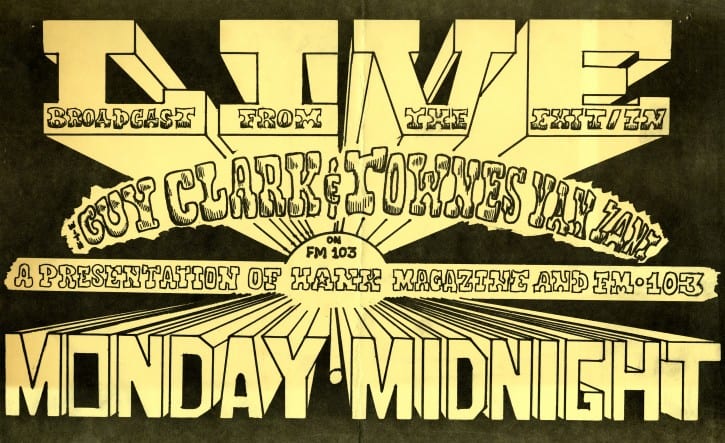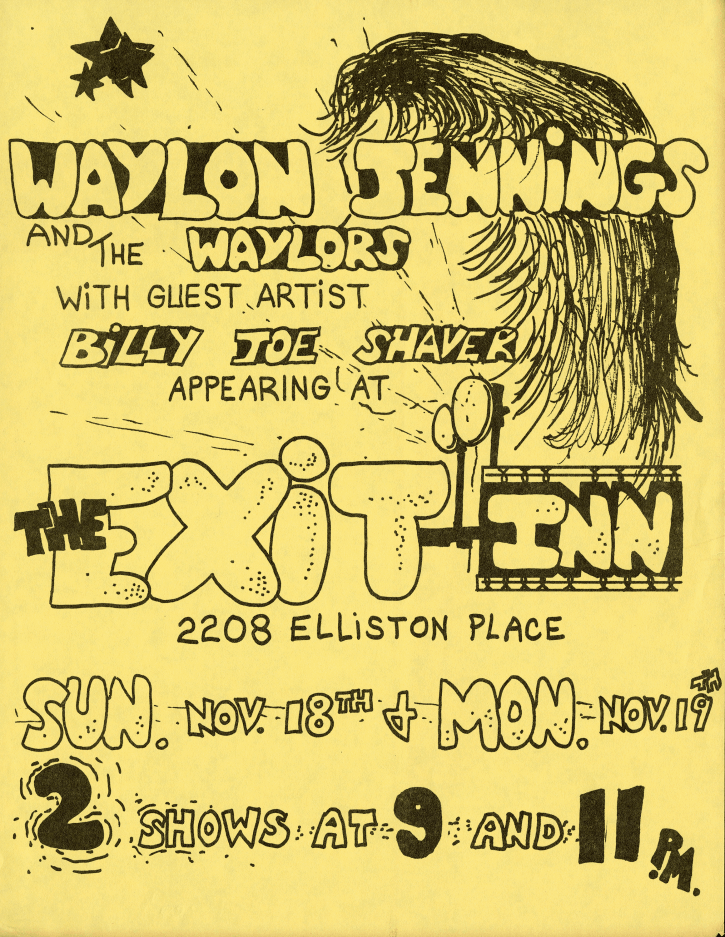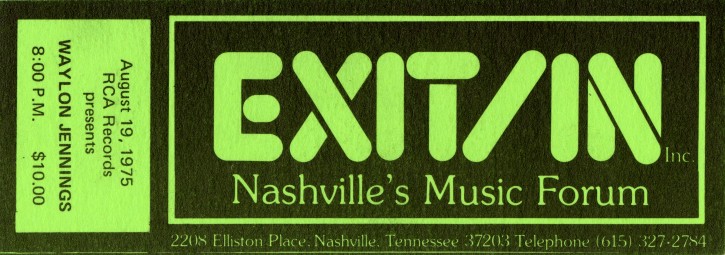Back to Press Releases
- Press Release
High Resolution Photos: Outlaws & Armadillos: Country’s Roaring ’70s: Artifacts
March 01, 2018

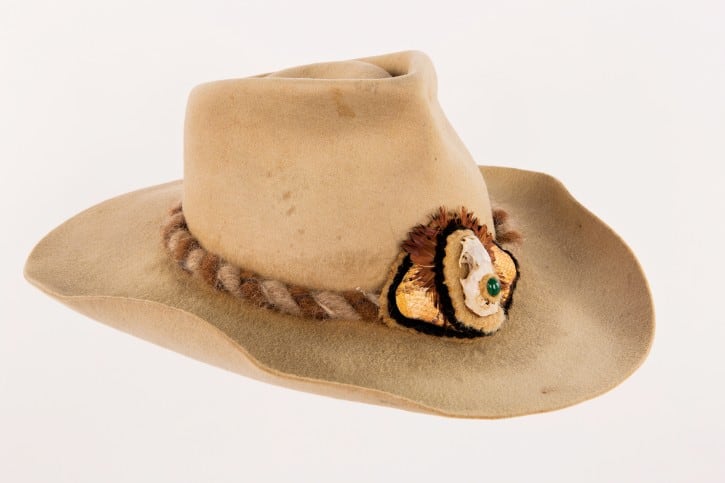
Willie Nelson gave Bobby Bare this hat—embellished with a mink skull, gemstone, feathers, and snake skin—in the early 1970s. Courtesy of Bobby Bare (Photo Bob Delevante, courtesy Country Music Hall of Fame & Museum)
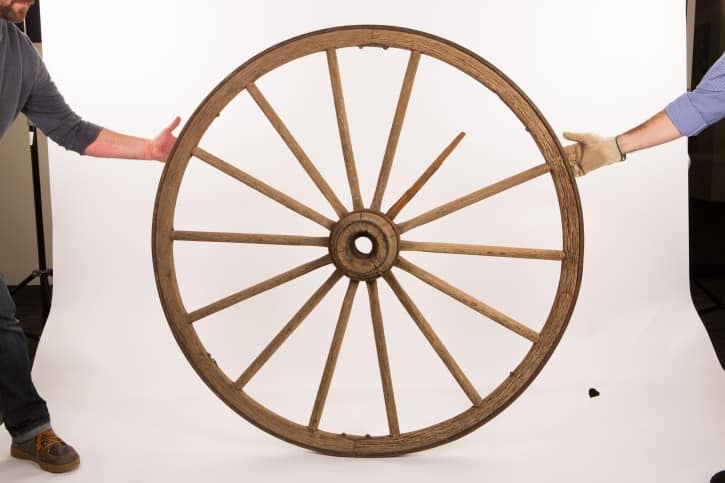
This wagon wheel with a broken spoke was propped at the front entrance of the Broken Spoke for many years. Courtesy of James White (Photo Bob Delevante, courtesy Country Music Hall of Fame & Museum)
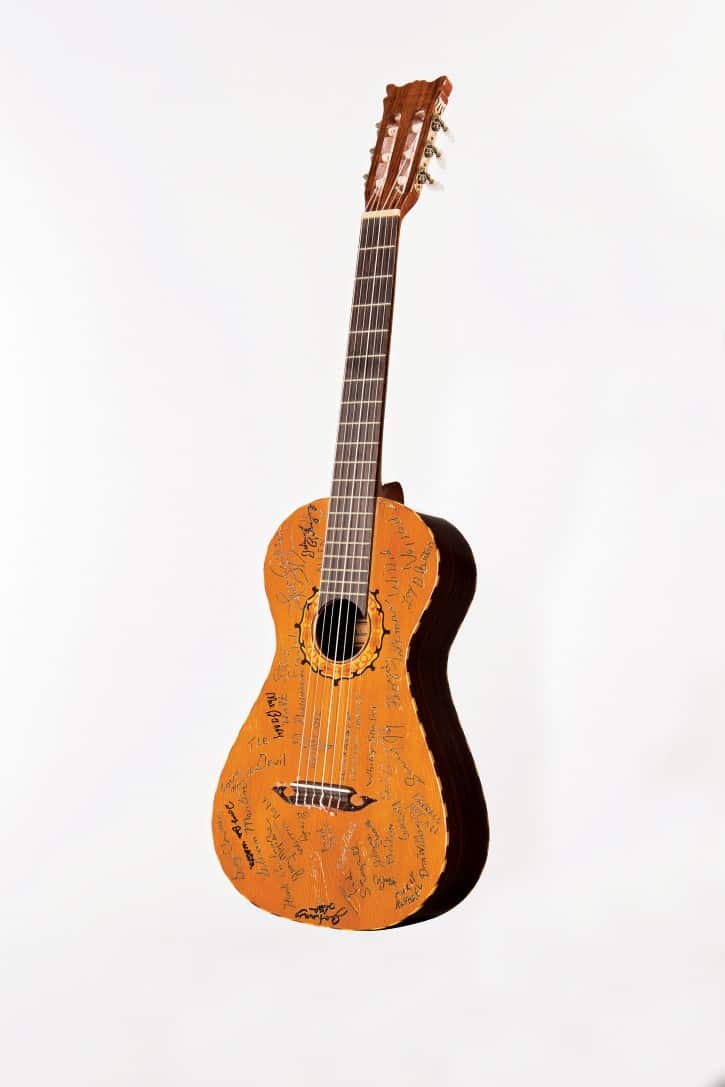
Some of the songwriters and performers at Darrell Royal-hosted guitar pulls carved their signatures into his Ventura V-500 Lady Nelson classical guitar. They included Hank Cochran, Johnny Gimble, Darrell McCall, Willie Nelson, Mickey Raphael, Johnny Rodriguez, Whitey Shafer, Red Steagall, Floyd Tillman, and Don Williams. Courtesy of Bill Schneider (Photo Bob Delevante, courtesy Country Music Hall of Fame & Museum)
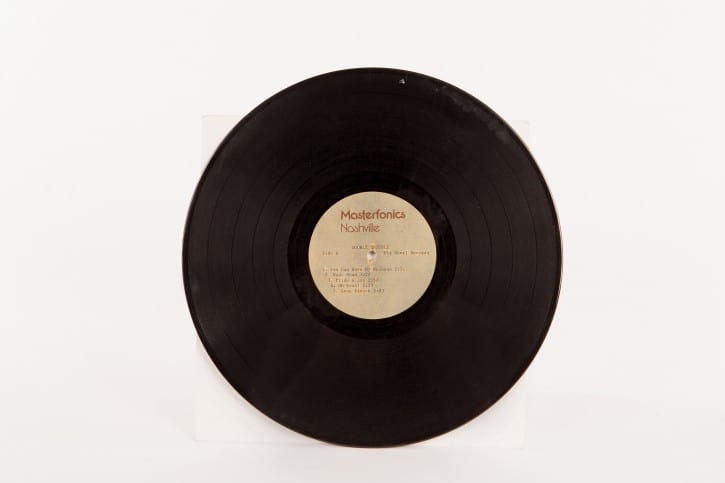
Test pressing of an unreleased album by Double Trouble, an Austin R&B group that included guitarist Stevie Ray Vaughan and singer Lou Ann Barton. Joe Gracey produced the recordings at Cowboy Jack Clement’s Nashville studio, the Cowboy Arms & Recording Spa, in November 1979. Courtesy of Kimmie Rhodes (Photo Bob Delevante, courtesy Country Music Hall of Fame & Museum)
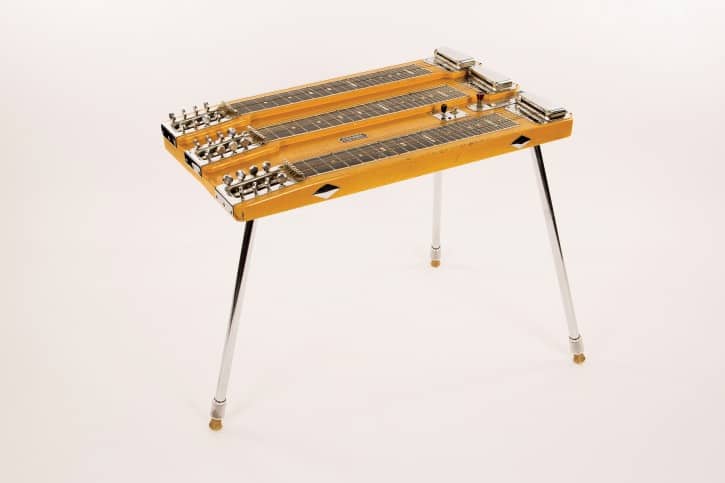
“Little Doug” Sahm performed in this western outfit made by his mother. A prodigy on steel guitar, mandolin, and fiddle, Sahm made his radio debut at age five and he performed on the Louisiana Hayride when he was eight. On December 19, 1952, Sahm performed with Hank Williams at Austin’s Skyline Club, less than two weeks before the country icon’s death. Courtesy of Shawn Sahm (Photo Bob Delevante, courtesy Country Music Hall of Fame & Museum)
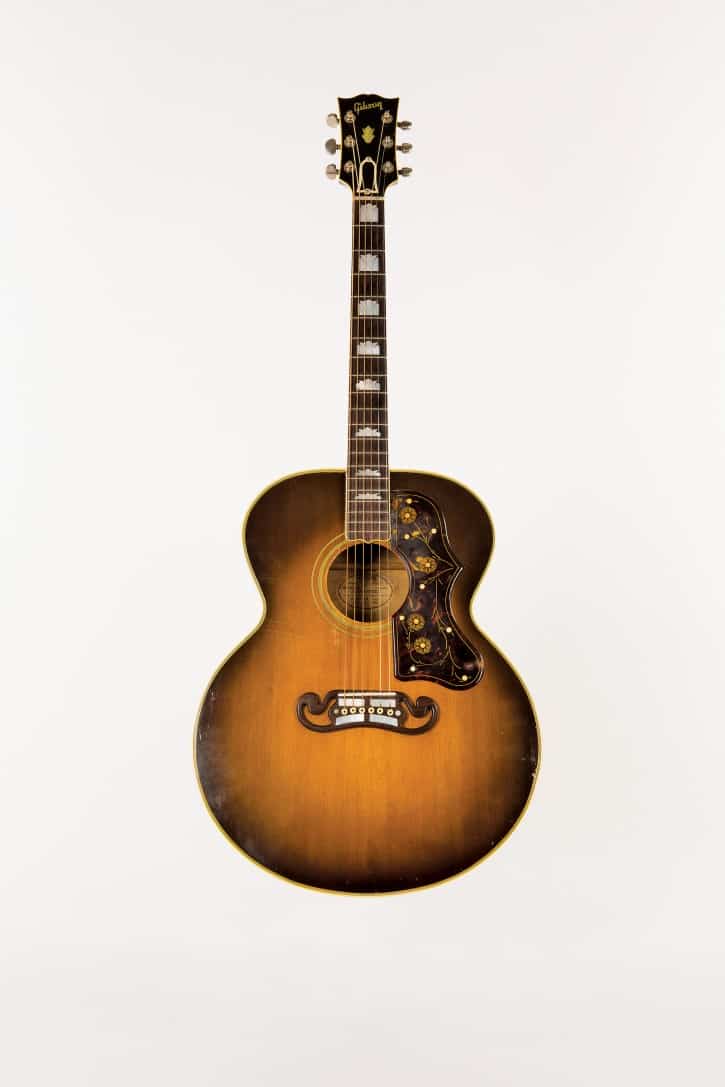
Cowboy Jack Clement acquired this 1952 Gibson SJ-200 when he was in the Marine Corps and it remained his close companion for the rest of his life. Clement played it on recordings including Johnny Cash’s “Big River” and “Ring of Fire,” and used it to write classics such as Cash’s 1958 chart-topper “Guess Things Happen That Way,” Porter Wagoner and Dolly Parton’s 1969 hit “Just Someone I Used to Know,” and “Let’s All Help the Cowboys (Sing the Blues),” from Waylon Jennings’s 1975 album Dreaming My Dreams. (Photo Bob Delevante, courtesy Country Music Hall of Fame & Museum)
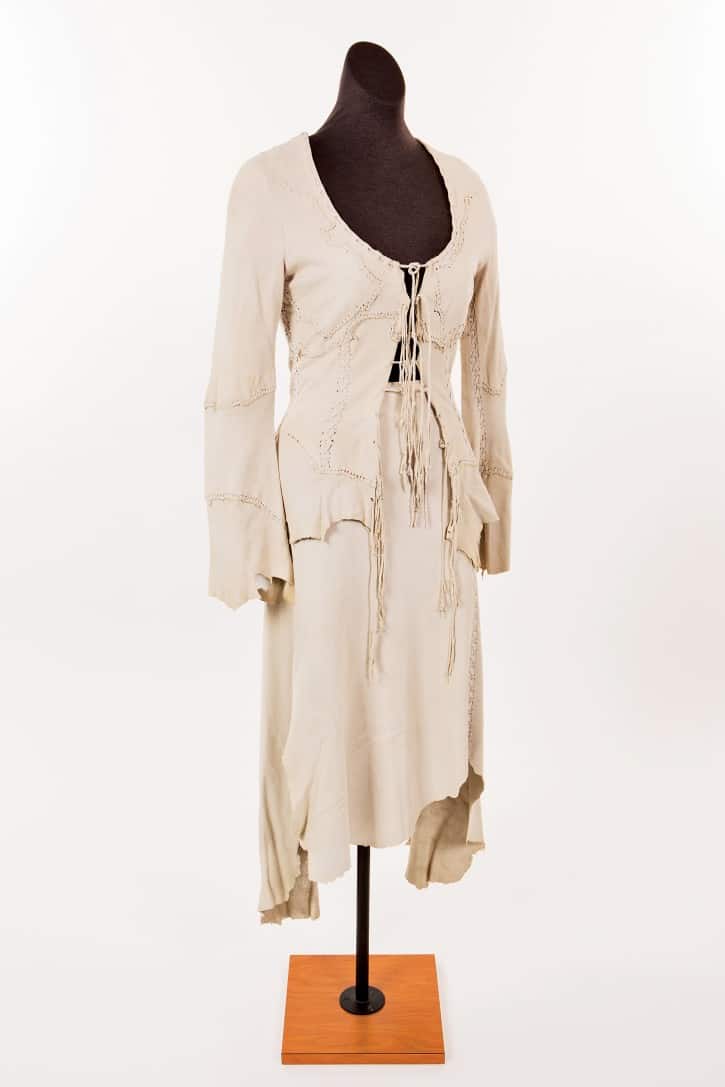
Suede blouse and skirt worn by Jessi Colter on the cover of her album That's the Way a Cowboy Rocks and Rolls (1978). (Photo Bob Delevante, courtesy Country Music Hall of Fame & Museum)
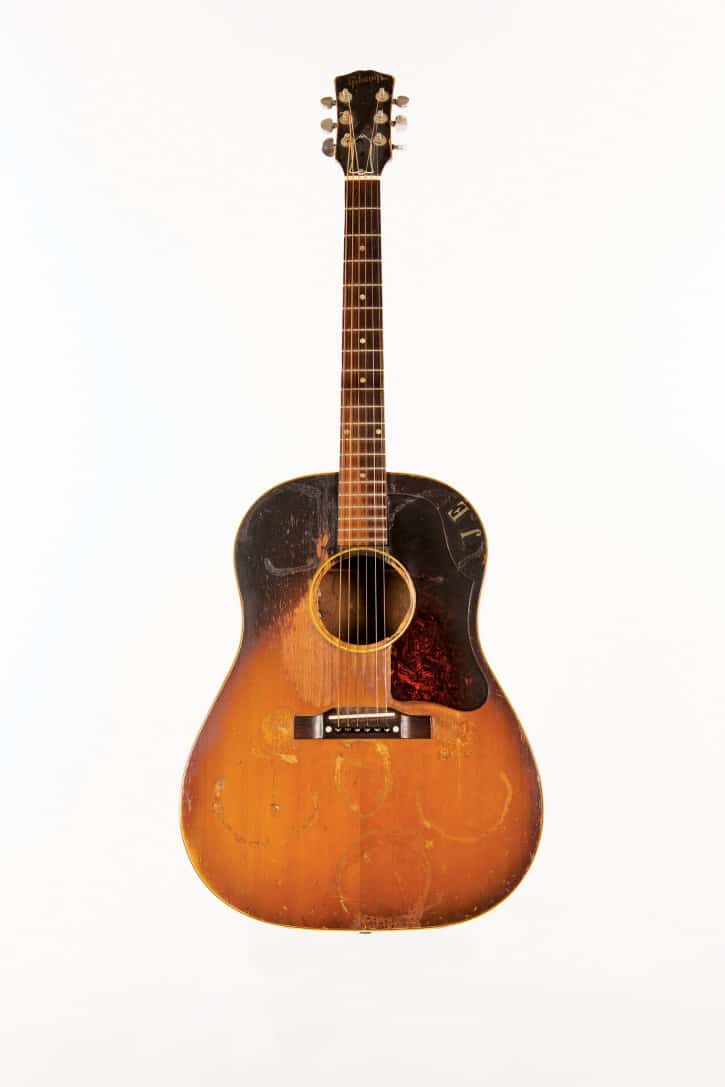
Joe Ely used this Gibson J-45 extensively. He is pictured with it on the cover of his second album, Honky Tonk Masquerade (1978). Ely acquired the guitar from a street musician in Venice, California, who had glued sea shells to the front of the instrument. The finish was damaged when the shells were removed. Courtesy of Joe Ely (Photo Bob Delevante, courtesy Country Music Hall of Fame & Museum)
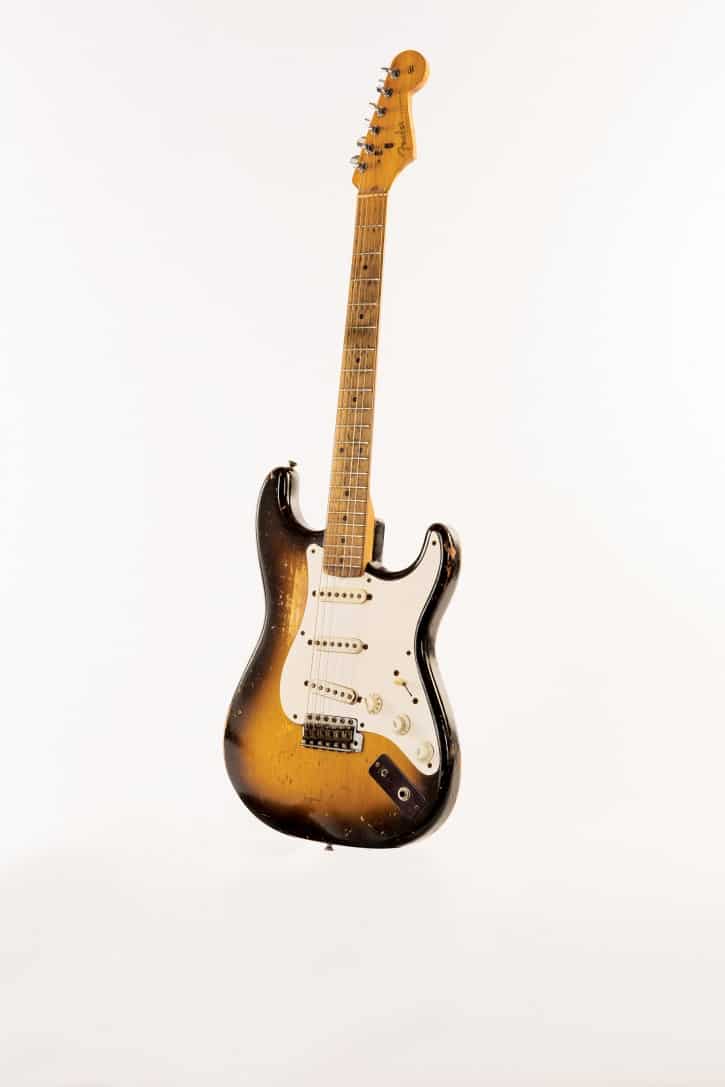
Marshall Chapman began using this 1956 Fender Stratocaster in the 1970s. Courtesy of Marshall Chapman (Photo Bob Delevante, courtesy Country Music Hall of Fame & Museum)
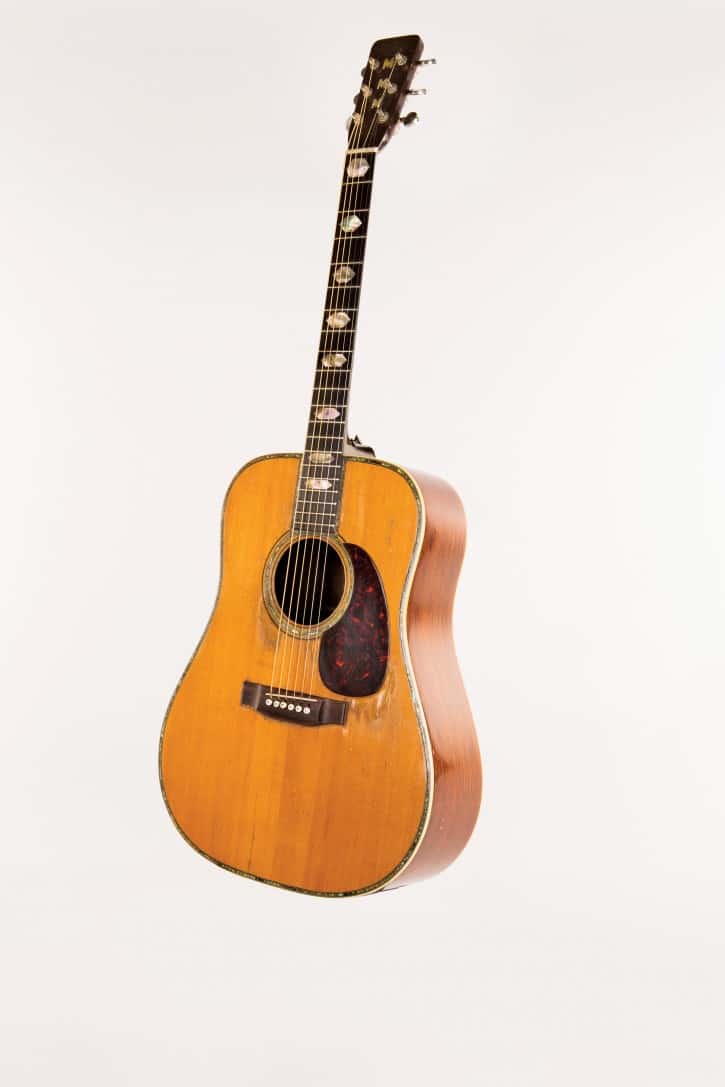
This 1960 Martin was Michael Murphey’s primary guitar, used to write songs including “Geronimo’s Cadillac,” “Wildfire,” and Austin anthem “Cosmic Cowboy.” Originally built as a Martin D-28, the instrument was later customized with abalone inlays, giving the appearance of a D-42. Murphey’s initials are inlaid on the headstock. Courtesy of Michael Martin Murphey (Photo Bob Delevante, courtesy Country Music Hall of Fame & Museum)
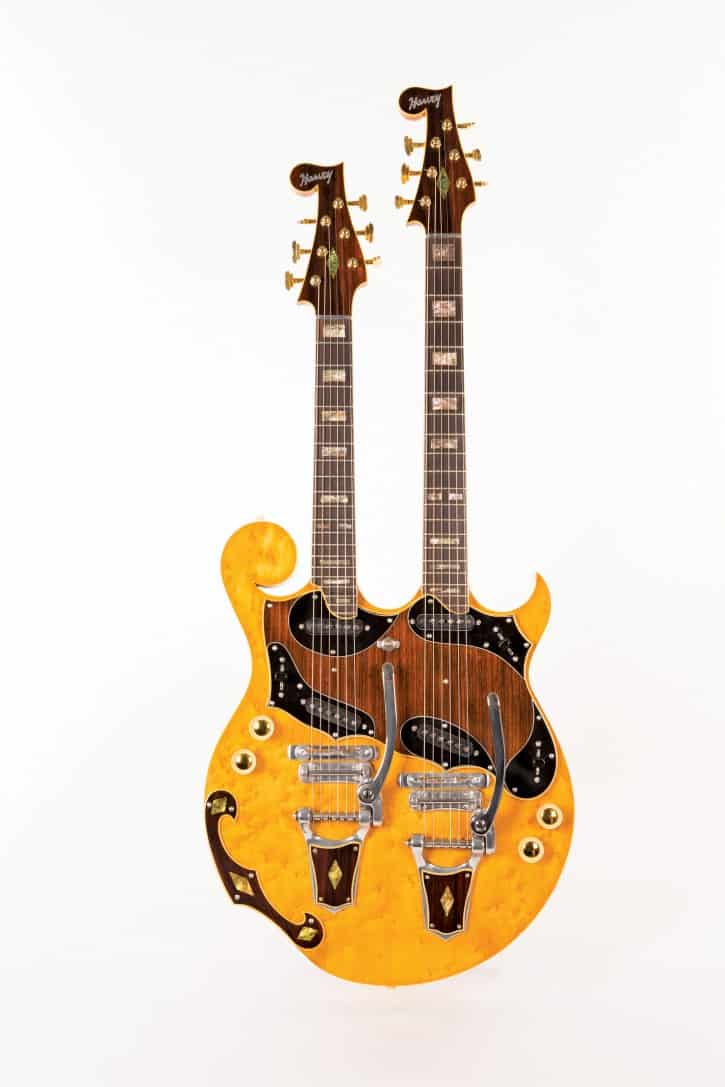
Custom built for Paul Buskirk by California luthier Jim Harvey in 1958, this double-neck electric guitar has a six-string mandola-scale neck and a standard guitar neck. It features a bird’s-eye maple body; walnut accents; abalone inlays; Fender Stratocaster pickups; and Bigsby vibratos. Courtesy of Deke Dickerson (Photo Bob Delevante, courtesy Country Music Hall of Fame & Museum)
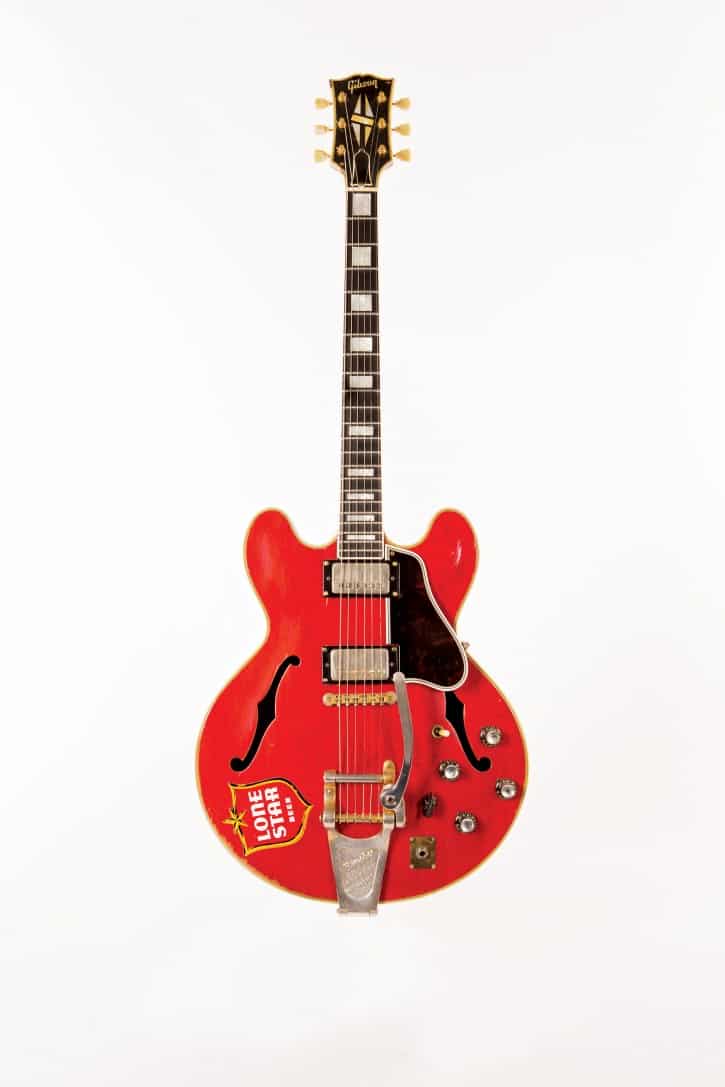
Ray Benson used this 1960 Gibson ES-355 with Asleep at the Wheel from 1972 to 1985. He added the Lone Star beer sticker as a tribute to Ernest Tubb’s band, the Texas Troubadours, who placed Lone Star stickers on their guitars. Courtesy of Ray Benson (Photo Bob Delevante, courtesy Country Music Hall of Fame & Museum)
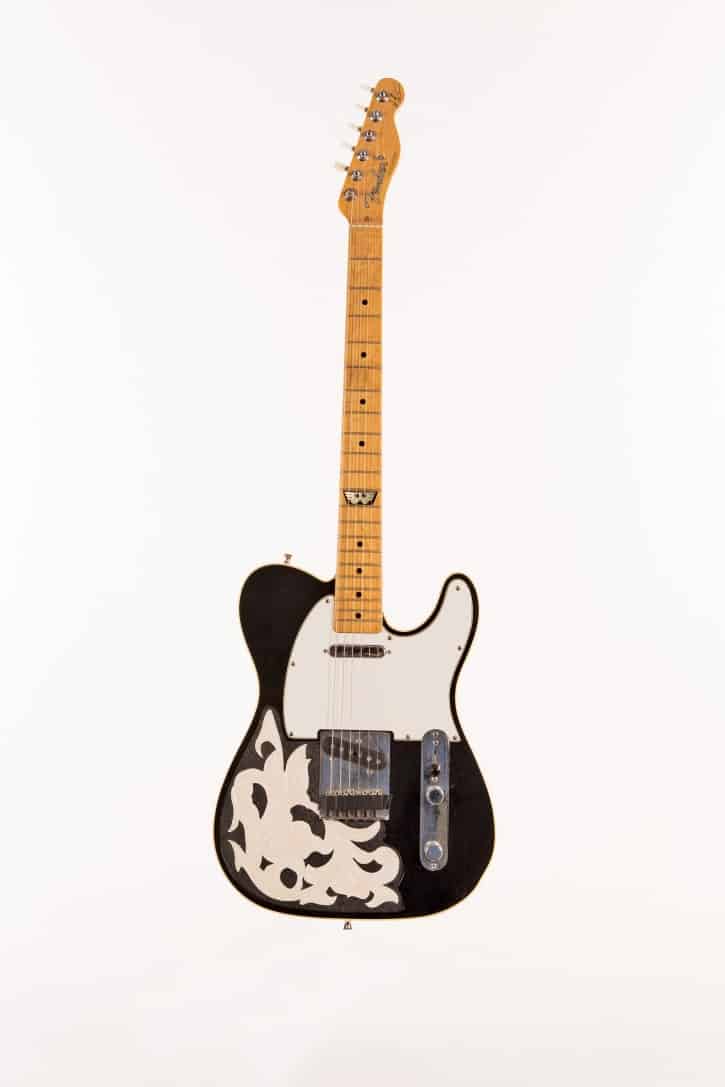
This Telecaster was built for Waylon Jennings by the Fender Custom Shop in the early 1990s. Modeled after his 1963 Telecaster, it features a leather white rose inlay on the body; Waylon’s Flying W logo inlaid at the twelfth fret; his signature on the headstock; and a Scruggs/Keith tuner on the low E string. This instrument was the prototype for Fender’s Waylon Jennings Tribute Series, introduced in 1995. Courtesy of Jessi Colter (Photo Bob Delevante, courtesy Country Music Hall of Fame & Museum)

